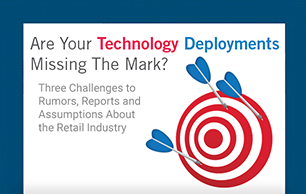Mobile apps have an amazing way of getting better data, faster from across the supply chain. Where logistics is concerned, it’s now possible to capture relevant data to ensure product integrity, on-time delivery, optimal customer service and proper distribution by implementing IoT sensor connected networks.
Historically, lack of visibility during the journey from the point of origin to final destination posed a challenge to even the most sophisticated supply chain management organizations. The resulting “blackout period” has made information about the trip and the condition of the product being shipped unknown or unverifiable, which introduces a myriad of business risks. For example, shipping containers can experience unauthorized entry and theft which then goes unreported; refrigerated trucks can experience intermittent cooling failures, violent shocks, or misdelivery, which can damage the product and certainly affect customer satisfaction.
For these reasons, transportation is often fraught with risk and disruption, contributing to high levels of breakage, loss, theft and damage, which can neither be traced nor verified by any dependable means. More than the mere dollar value of physical inventory lost, compromised product integrity during transit can result in long-term damage to the brand. Consider food items that are not maintained at a proper temperature, subsequently sickening consumers and leaving a wake of distrust, frustration and even litigation.
Introducing the Next Generation of IoT Sensors in Transport

The “digital evolution” of all industries has sparked tremendous advancements in assuring outcomes. Mobile computing, analytics and cloud services provide the backbone for building and leveraging data captured from IoT sensors to provide real-time transit information to all of the stakeholders vested in creating a cost effective and assured supply chain. The implementation of IoT sensors is breaking barriers and serving as a game-changer in this space.
The first generation mobile solution was the smart phone, providing anytime access to information, pending an agreeable and available driver. Data logging relied on drivers to input data into software using their mobile phones or devices, which could then be accessed by other stakeholders in the supply chain. Challenges included relying on drivers to consistently enter data, the potential purposeful or unintentional loss of data integrity, and the debate regarding use of mobile phones for personal vs. work activities.
 But today, a new generation of integrated IoT sensors like those offered by one of Telaid’s technology partners, Sensor Transport, are taking off like wildfire and have the benefit of inputting data directly into the system, reducing the likelihood of loss of data integrity.
But today, a new generation of integrated IoT sensors like those offered by one of Telaid’s technology partners, Sensor Transport, are taking off like wildfire and have the benefit of inputting data directly into the system, reducing the likelihood of loss of data integrity.
Sensor Transport’s IoT sensors collect a vast array of types of data to provide real-time monitoring of data in transit. The potential for IoT sensors is as unlimited as the creativity of their inventors and is sure to revolutionize transportation and close the gap on data loss during the transfer of goods.
Consider some examples:
- Light sensitivity sensors – These sensors can be fixed inside containers to indicate if doors have been opened prior to arrival at final destination.
- Temperature sensors – Temperature sensors provide automatic alerts when temperature conditions fall outside an acceptable range. This is particularly important in the case of food where quality and safety absolutely depend on maintaining items at the proper temperature.
- Shock sensors – These sensors can measure shock to the container as it travels, potentially indicating that a driver took an unauthorized route or explaining when and why inventory breakage occurred.

Using mesh wireless networks, these sensors offer continuous, real-time information to stakeholders, providing documentation of incidents and/or alerting players of situations that need to be addressed immediately. These are just a few examples of IoT devices in real usage scenarios. For more information about how Sensor Transport is helping companies protect top brands and deliver value against unique supply chain challenges, visit www.sensortransport.com.
For more ideas about how to leverage technology to create the most efficient warehouse possible, visit www.telaid.com/connectedwarehouse.




